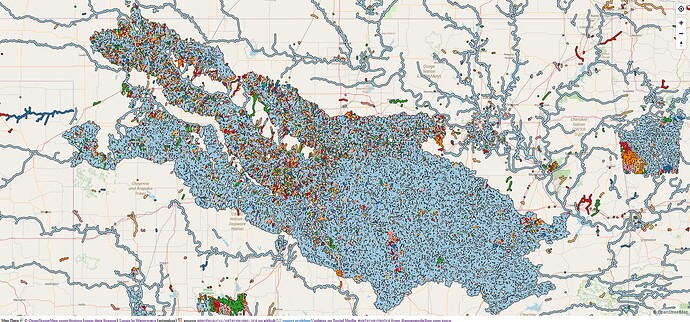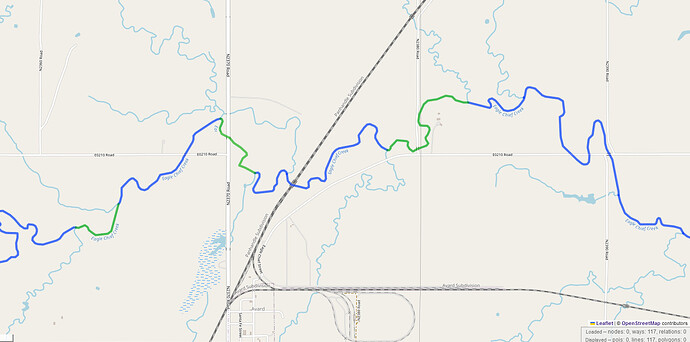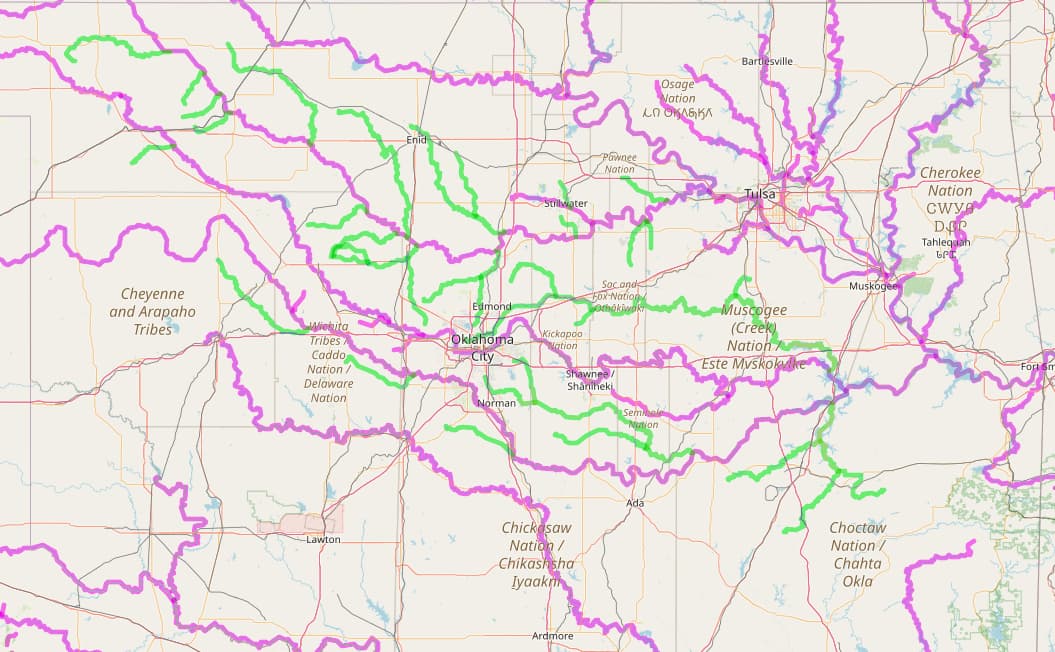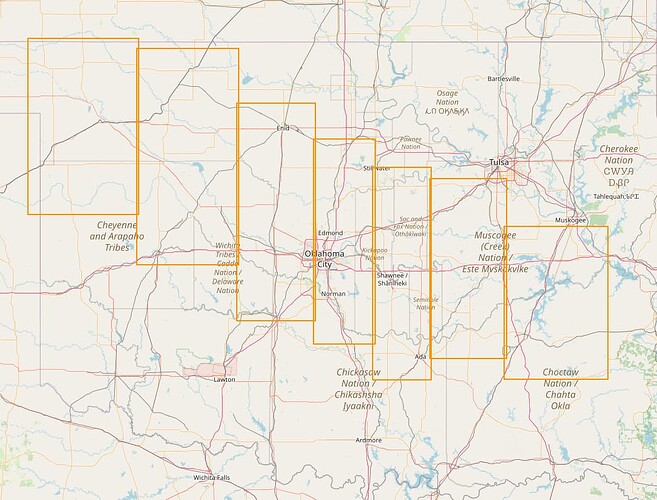Thank you both!! I really appreciate everything you’re saying.
I’ve been gathering more information.
Yeah, the northwest part, those lakes don’t have AritificalPaths running through them so there wasn’t anything to connect, just looking at waterways. I don’t know if WaterwayMap considers small bodies of water when connecting streams and rivers? Even if it doesn’t I’m looking at connecting ways in Oklahoma like this: w61823627,w61945487,w61858734. The nodes are there, I’d just have to merge them.
One thing I’m not sure of though, is cases like way/138483691. It’s inside a small pond by itself, it is already connected to the way in the direction it’s flowing out of the pond (north in this case), but then it’s first node is at the back of the pond not connected to anything. Should I connect that, since the nodes are there to do so? Or leave it?
I found 4,125 instances of that, waterway starting at the back of a pond but not connected to it there, no other waterways nearby to connect to. And then 12,905 instances of every other case (waterway flowing out of or into pond while positioned outside the pond; OR waterway inside the pond and flowing up to the edge and stopping with no other waterway to connect to). Then, for the nodes I’d merge this time, 0.5% are at identical coordinates. 40% are closer than 3cm, and 60% are between 3 and 5 cm.
Thank you for your time!




